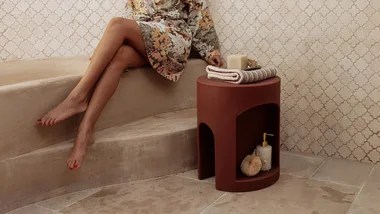You’ve made it through pregnancy, survived labour and even managed to get your baby to latch successfully onto your breast the first time you breastfeed. Tick, tick and tick.
Then comes the momentous occasion of leaving the house with your baby, knowing that the chances of having to breastfeed in public is a distinct possibility.
What can you wear that is functional, comfortable and remotely flattering?
Enter Natalie Halman. Three years ago, when she was 27, the new mum launched the Facebook page Can I Breastfeed In It? Almost immediately, thousands of women were offering suggestions for high street clothes you could gracefully get in and out of in order to breastfeed.
Playsuits, wrap dresses, simple stretchy tops – breast feeding Mums filled the page with items of clothing they had picked up at their favourite store that had become a functional fashion friend.
As most Mums will concur, tops that you have to pull up, rather than pull down, are the enemy of the breastfeed as they expose your stomach in the process (which, quite frankly is way more terrifying than exposing your breast in the early weeks). But that’s just the beginning of the sartorial elimination process.
“Suddenly you need to account for feeding access, how it fits on your new post baby body and whether the material will hide baby inflicted stains,” says Halman. “All that, alongside retaining a style that makes you feel like you, is not an easy task.”
Most importantly, the page wants to shift the idea that breast-feeding friendly does not have to mean nursing clothes. Every week, it publishes a fashion round-up and “hot favourites” based on what is popular in the group.
CIBII now has 60,000 members, which, given that 800,000 babies are born every year in the U.K and 34% of mothers breastfeed for the first six months, is a significant proportion of the community. “This has happened totally organically,” says Halman. “The unification of breastfeeders on Facebook is quite incredible. Due to the lack of proper breastfeeding support provided by councils, we have been forced to come together to support each other through what is, for many, one of the most challenging times in our lives.”










